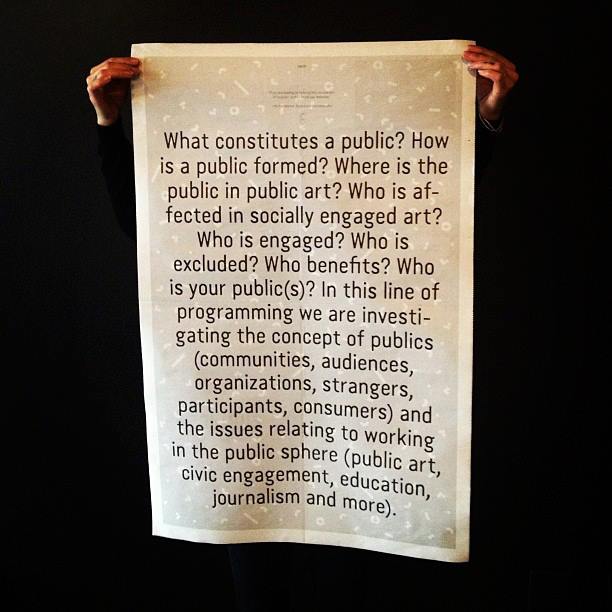After four years in Portland Oregon, the Open Engagement conference will relocate to Queens, New York. Poised to be become a much needed antidote to the May art fairs, we’ll get a weekend-long event—Friday May 16th to Sunday May 18th—devoted to art and social activism at the Queens Museum and other art spots around the city. This is important: Art that isn’t a participant in every rise and fall of the market doesn’t get as much attention. Here’s its chance. Another reason to go: Open Engagement is very affordable.
In fact, it’s .
.
Those tickets aren’t available online yet, but hose who want to register early (which we suggest) can do so by offering a minimum 10 dollar donation. So grab your tickets quick because session spots are bound to fill up fast; the program looks amazing. Naturally, we’ve highlighted the sessions we think will be great.
Friday
5:00-6:30pm | Writing for Socially Engaged Art
Socially engaged and participatory projects are a major current in artistic practice today. Just look at Tania Bruguera’s “Immigrant Movement International,” Thomas Hirschhorn’s “Gramsci Monument,” Suzanne Lacy’s “Between the Door and the Street,” and the Bruce High Quality Foundation’s free university; these are just a few of the many recent socially engaged art projects to take place in the city. Meanwhile, art critics frequently remain conflicted about how to describe and assess these new projects, which are often designed for and with a specific community. Can these projects be assessed using the same rubric as traditional object-based art or must new languages be developed? This panel discussion looks at new directions in writing about socially engaged art from diverse perspectives.
Saturday
10:00am- 12:00pm | Edgar Arceneaux, New Financial Architectures for Creative Communities
What does a more just and equitable financial architecture that reflects the collective aims and values of today’s creative community look like? I figure the best way to think about what creative people and communities need tomorrow is to understand directly what we are all doing today.
12:30-2:00pm | Abigail Satinsky: Is social practice gentrifying community arts?
Rick Lowe of Project Row Houses posed this question in conversation with Nato Thompson at this year’s Creative Time Summit, addressing how social practice as a contemporary art discipline threatens to obfuscate a legacy of community arts. Where is it possible to draw distinctions and who is getting left out of the conversation because they do not trade in contemporary art discourse or have an MFA? How can we honor many different legacies and open up the doors to a broader history of grassroots arts organizing that can inform and challenge what we celebrate as social practice art today?
4:40pm-4:50pm | Manuel Martagon, Cocina Poblanysima: Something was missing in the recipie
Cocina Poblanysima was a compilation of recipes from Mexican cooks working in NY kitchens. Unable to actually complete the book, Martagon had to adapt his project drastically. In this presentation the artist reflects on the blind spots around projects related to labor and immigrant communities.
Sunday
12:30-2:00pm | Sara Reisman: Public Art as Mirror
Does public art need to be a reflection of the community where it is sited? How do the stakes and expectations for community inclusion differ between short term and long-term/permanent artwork?
4:30pm-4:40pm | Deanna Haggag & Ginevra Shay, The Contemporary: Audience is Everywhere
The Contemporary is a nomadic art museum that commissions projects and programming that define a “new public,” one where audience is everywhere.The museum is invested in interconnectivity and committed to social responsibility in order to dismantle “passive engagement” and promote ‘actual inclusion.’



Comments on this entry are closed.